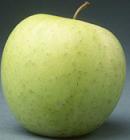feldgrau
Posts: 20
Joined: 8/9/2006
Status: offline

|
Battalions are best for the 2.5 km/hex scale, IMO.
A German infantry battalion during WWII generally had less than 2.5 km width when attacking, more like 1 km in bad terrain and when less prepared, and a little more, 1.5-2 km in open terrain and when prepared. The armored battalions had even more narrow groupings when attacking. A division should generally defend 8-10 km of frontline.
Russian units during WWII had the following standard width of the formation when defending; battalion: 1.5-2 km, regiment: 4-5 km, division: 10-12 km. The depth of the formation was somewhat lower. Easily defended sections of the front, or where attacks were not expected, the maximum width of a regiment was 15 km, and for a division 30 km.
Examples from WWII, at Rzhev 1942, the front of 120 km had 20 divisions on the German side, and 120 on the Russian side. At Baranow 1945, 60 km frontline was defended by 3 German divisions against 34 attacking Russian divisions.
That was for WWII, which saw large masses of infantry and weapons that generally did not have effect in the km range. Today, for example, the Swedish Army and its battalions (the few that are left...) generally has a higher maximum width when defending, even upwards to 10 km in some cases, but more often around 4 km. When attacking, a battalion should not be grouped wider than 3 km.
/feldgrau
|
 Printable Version
Printable Version







 New Messages
New Messages No New Messages
No New Messages Hot Topic w/ New Messages
Hot Topic w/ New Messages Hot Topic w/o New Messages
Hot Topic w/o New Messages Locked w/ New Messages
Locked w/ New Messages Locked w/o New Messages
Locked w/o New Messages Post New Thread
Post New Thread